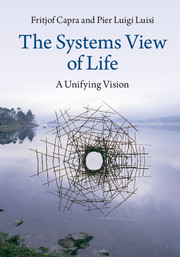Book contents
- Frontmatter
- Dedication
- Contents
- Preface
- Acknowledgments
- Introduction Paradigms in science and society
- I The mechanistic worldview
- II The rise of systems thinking
- III A new conception of life
- 7 What is life?
- 8 Order and complexity in the living world
- 9 Darwin and biological evolution
- 10 The quest for the origin of life on Earth
- 11 The human adventure
- 12 Mind and consciousness
- 13 Science and spirituality
- 14 Life, mind, and society
- 15 The systems view of health
- IV Sustaining the web of life
- Bibliography
- Index
11 - The human adventure
from III - A new conception of life
Published online by Cambridge University Press: 05 April 2014
- Frontmatter
- Dedication
- Contents
- Preface
- Acknowledgments
- Introduction Paradigms in science and society
- I The mechanistic worldview
- II The rise of systems thinking
- III A new conception of life
- 7 What is life?
- 8 Order and complexity in the living world
- 9 Darwin and biological evolution
- 10 The quest for the origin of life on Earth
- 11 The human adventure
- 12 Mind and consciousness
- 13 Science and spirituality
- 14 Life, mind, and society
- 15 The systems view of health
- IV Sustaining the web of life
- Bibliography
- Index
Summary
The ages of life
To chart the unfolding of life on Earth, we have to use a geological time scale, on which periods are measured in billions of years. It begins with the formation of the planet Earth, a fireball of molten lava, around 4.5 billion years ago. We can distinguish three broad ages in the evolution of life on Earth, each extending for 1–2 billion years, and each containing several distinct stages of evolution. The first is the prebiotic age, in which the conditions for the emergence of life and the first protocells were formed. It lasted 1 billion years, from the formation of the Earth to the creation of the first cells, the beginning of life, around 3.5 billion years ago. The second age, extending for a full 2 billion years, is the age of the microcosm, in which bacteria and other microorganisms invented the basic processes of life and established the global feedback loops for the self-regulation of the Gaia system.
Around 1.5 billion years ago, the Earth's modern surface and atmosphere were largely established; microorganisms permeated the air, water, and soil, cycling gases and nutrients through their planetary network, as they do today; and the stage was set for the third age of life, the macrocosm, which saw the evolution of the visible forms of life, including ourselves.
- Type
- Chapter
- Information
- The Systems View of LifeA Unifying Vision, pp. 240 - 251Publisher: Cambridge University PressPrint publication year: 2014

